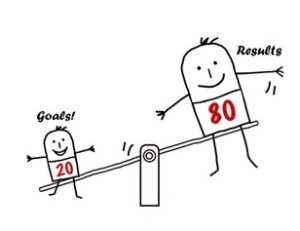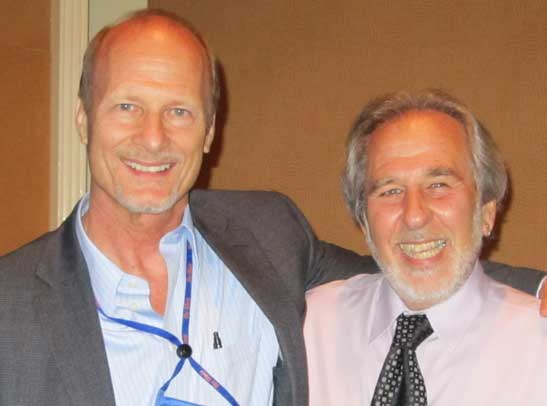“Your customers are only satisfied because their expectations are so low and because no one else is doing better. Just having satisfied customers isn’t good enough anymore. If you really want a booming business, you have to create Raving Fans.” Ken Blanchard, Raving Fans
Customer Service is one of the 5 Power Drivers of your business.
It is the least expensive form of marketing you have and will be your surest guarantee to profits in the years to come.
But in my work in business development, and my experience as a consumer, most service is just adequate. It is “nice.” If it was any less, there wouldn’t be any service at all. Most service is just good enough to get by.
The most common examples of poor service I have witnessed were encounters by the provider that were so routine as to become rote and even superficial. Services were provided as part of a checklist, almost robotically. Even with all the smiles and friendly chatter, this customer was just like all the others before – nobody special. Added to this, the support staff were disengaged, bored, or even irritated at the customer for the interruption.
I have done enough customer interviews to know that most of those who give online reviews, for example, do so out of a sense of friendship and support, rather than from their exuberant advocacy. They are sincere, but just not that excited about the services they received.
For example, how would you compare your last visit with your attorney, dentist or accountant? They got the job done, right? But, it wasn’t “WOW… I just saw my dentist and it was awesome!”
You wouldn’t stand in line to see your accountant all night like people do to get a new iPhone or tickets to a favorite rock concert.
But this is the value customers will need to place on your services inorder for your business to thrive in the next ten years and more
Why Customer Service is SO Important
Customer Service Now
There are dozens of books and studies that document why customer service is vital to the health of your business. Every year there are new studies that show the importance of excellent customer service. I am sure that you have seen them.
Some highlights:
- Americans continue to reward companies that get service right. US consumers say they’re willing to spend 17 percent more to do business with companies that deliver excellent service, up from 14 percent in 2014. As a group, Millennials are willing to spend the most for great care. (21% additional), (American Express 2017 Customer Service Barometer)
- Maximizing satisfaction with customer journeys can increase customer satisfaction by 20%, lift revenue by 15% and lower the cost of serving customers by as much as 20%. (McKinsey & Company)
- 86% of consumers are willing to pay more for an upgraded experience. (ThinkJar)
- One happy customer can equal as many as 9 referrals for your business. (American Express)
- A 2% increase in customer retention has the same effect as decreasing costs by 10%. (Leading on the Edge of Chaos, Emmet Murphy and Mark Murphy)
- One happy customer can equal as many as 9 referrals for your business. (American Express)
On the down side:
- A typical business hears from 4% of its dissatisfied customers. (“Understanding Customers” by Ruby Newell-Legner)
- 85% of customer churn due to poor service was preventable. (ThinkJar, Inc.)
- 89% of consumers have stopped doing business with a company after experiencing poor customer service. (Rightnow Customer Experience Impact Report)
- Depending on which study you believe, and what industry you’re in, acquiring a new customer is anywhere from five to 25 times more expensive than retaining an existing one. (Harvard Business Review, 2014)
Customer Service in the Future
As we move into the 2020’s, the quality of your service will be more important than ever before. It will be the distinguishing factor between your business and others that provide comparable services.
A recent report from a survey by Microsoft stated: “As customer expectations continue to climb, it becomes more challenging for brands to set themselves apart from the competition. Markets are increasingly crowded, and both price and product are being steadily overtaken by customer experience as the number one brand differentiator. (2018 state of global customer service report (Microsoft))
Research by Walker, Inc., predicted that by 2020 customer experience will overtake price and product as the main differentiator.
Your Replacement Is Being Shipped Now
Artificial Intelligence is coming for you.
By 2029, machines will be able to match human intelligence. This is a prediction by Ray Kurzweil (co-founder and chancellor of Singularity University and Google engineer and author of The Singularity is Near). Kurzweil, along with other futurists, predict that computers will be building computers faster and smarter than humans – and this would create a technological singularity – where the speed of technology development of increases infinity fast. According to Peter Rejcek – there is serious investment based upon these predictions. (Singualrityhub.com, March 31, 2017)
How will A.I. impact the professions? How will this impact you?
“Whatever terminology is preferred, we foresee that, in the end, the traditional professions will be dismantled, leaving most (but not all) professionals to be replaced by less expert people and high-performing systems. “(The Future of Professions, Susskind and Susskind, Page 303, 2015)
The Future Belongs to Those Who Provide the World Class Service
This is the writing on the wall and those smart enough, will heed it.
I truly hope that this is you.
If you are not the best in your niche, the time will come when you will be left behind – like an abandoned roadside fruit stand bypassed by a newer and faster road.
I want to give you some insight and actions steps so that you will be a winner and a profitable leader in your profession well into the 2020’s.
But beware — there are booby traps and thieves along the way that can rob you of your success. So, let’s look at these villains hang out so that you are prepared and able to create World Class service and dominate your niche.
Six Barriers to Extra-Ordinary Service
1. Organizational demands eventually wear down the provider into mediocrity
How can a provider become a master at their craft and focus on creating great results while at the same time trying to run their growing business? There is just too much to do. All this work finally hobbles excellent service and outcomes.
There is just too much to do – too many roles to assume, too many hats to wear.
2. Hubris
To achieve any success at all, you have had to persevere and breakthrough many challenges. You have many reasons, therefore, to feel that your way is a winning way because, obviously, it has worked. At least up to now.
But great service is not about you, it is not about your business or philosophy or religion or any of your bias’. It is solely about your customer. It is their goals, not yours and not those of the business, that must be achieved.
You must have humility to review the outcomes of your work and question how you can improve as a provider – and how the actions of your support team can also improve.
3. You and your team have lost sight of the value of your services.
The business of providing service to your customers can begin to overshadow the benefits they receive. At some point, the people you care for become “cases,” and their individuality blurs with everyone else’s.
Sometimes the “negative few outweigh the positive many,” and we can’t see or appreciate all the good our services have done for our customers, their families, and even the community.
The joy of helping others and the victories of seeing your customers overcome their issues no longer make you smile or fill your chest with confidence and pride.
4. Culture – Our Shallow World
We live in a fast-paced world that does not seem to have time for understanding, empathy, or thorough results.
We are all in a hurry, and for the most part, don’t expect, or demand, much from our providers.
There also still lingers an assembly-line culture of receiving a manufactured template from our providers, or at least their support team. And, as providers and support professionals, we can fall into the assembly-line mode of just seeing “another case,” with all their problems, idiosyncrasies, and often confused rudeness.
We end up short-changing our customers on the benefits that they could be receiving.
5. The Invisible Product
You are selling and delivering a product that is invisible.
It is not like buying a refrigerator, a car or a kite.
But customers don’t always know what criteria they should use to judge their results. They don’t know the process that is undertaken to deliver the outcomes they want, or even what the potential outcomes are.
So accustom to the objective criteria of your services, you may not appreciate the customer’s lack of understanding about the nature of their situation. As a result, the customer doesn’t know if they had a minor service or a complete one.
Standards become foggy, outcomes become poorly defined. Customers leave unhappy or confused and the provider is dismayed.
6. Not Yet a Champion
There really is a difference between a rookie and a master.
The idea of mastery is a dominate value in sports, music, and in some of the professions. But we live in a commoditized world and we want our gratification fast.
Employees don’t see their roles as a journey to becoming experts, and neither do many providers of services. Everyone works hard and gets results. Isn’t that enough?
No. It isn’t.
Plain and ordinary service will not grow your business. If you and your support staff are not working hard on becoming masters in delivering World Class service, your customers and potential customers will be seeking businesses that are.
# # #
Stay tuned for Part 2: How to Create World Class Outcomes, Provide Extra-ordinary Service, and Raving Fans!




















